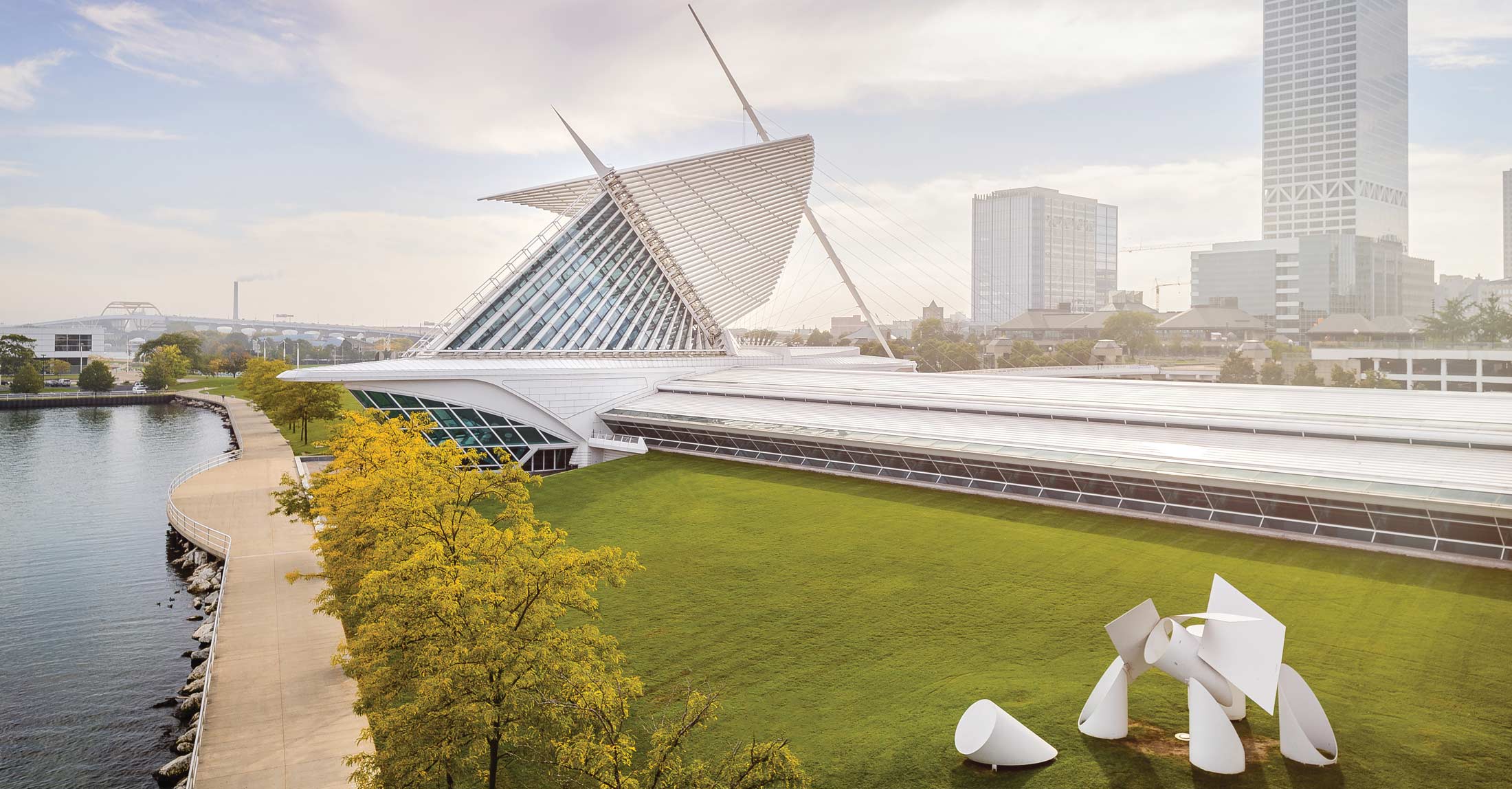
Fact Sheet for the Reimagined Milwaukee Art Museum
What: The Milwaukee Art Museum, the largest visual art institution in Wisconsin and one of the oldest museums in the nation, is reopening its transformed Collection Galleries November 24
When: Tuesday, November 24, 2015
Where: 700 North Art Museum Drive, Milwaukee, Wisconsin
Overview: This 6-year, $34 million project is the first-ever major reimagining of the Milwaukee Art Museum’s Collection Galleries, located in its two older buildings: the Eero Saarinen–designed War Memorial Center (1957) and the David Kahler–designed addition (1975). The renovation began with a need to make infrastructure repairs. With the support of Milwaukee County, which owns the buildings, the Museum took the opportunity to expand the space and dramatically reimagine the visitor experience, setting a new standard for twenty-first-century museums. When it reopens in November, the Museum will feature a welcoming new entrance that unites the Museum and Lake Michigan; a wine, coffee, and snack bar; an intuitive layout; more of its world-class Collection on view than ever before; new areas devoted to photography and design; and double the special exhibition space.
Read the press release | Browse available images | Discover what’s New and Noteworthy in the galleries
Renovation information
Architect of record: HGA Architects, Milwaukee, WI
Construction company of record: Hunzinger Construction, Brookfield, WI
Total cost: $34 million; $10 million from Milwaukee County, $24 million from Museum donors
Timeline: 6 years in planning, 14 months of active construction
Initial closure date: September 2014
Museum director: Daniel T. Keegan
New at the Museum:
An improved environment for visitors and a beautiful home for the over 30,000 works of art
Increased gallery space, allowing for more art to be on view to the public
Galleries devoted to photography, media arts, and design
Lakeside entrance off of the pedestrian lakefront path
Lakeside coffee and wine bar, open to the public
Dramatic panoramic views of the lake and the Santiago Calatrava–designed Quadracci Pavilion
LED bulbs throughout the Museum’s galleries to conserve energy and improve lighting of the art
Bathrooms on every level
By the numbers:
Total space in the Kahler/Saarinen Galleries: 150,000 square feet, an increase of 25,000 square feet in exhibition space
Number of galleries: 75
Works on view: 2,500, an increase of 1,000
Works in the Collection: 30,000, from antiquities to contemporary works
Annual Museum visitors: approximately 400,000
Oldest work: Mummy Coffin of Pedusiri, Egypt, 500/250 BC
Most recent work: Photographer Liz Deschenes’ 2015 Stereograph #25, a recent image and new acquisition for the Herzfeld Center for Photography and Media Arts
Wisconsin artists, past and present, on view in the galleries: 55
About the architecture:
The Milwaukee Art Museum is an architectural landmark, comprising three buildings designed by three legendary architects: Eero Saarinen, David Kahler, and Santiago Calatrava.
The War Memorial Center, completed in 1957, was designed by Finnish-American architect Eero Saarinen. The modernist building is shaped like a floating cross, with wings cantilevered from a central base. Saarinen’s innovative design won praise for its dramatic use of space; Time magazine called it “one of the country’s finest examples of modern architecture put to work for civic purposes.”
A David Kahler–designed Brutalist concrete addition was completed in 1975, a vast addition to the existing gallery space necessitated by the equally dramatic growth in the collections. Its eastern face had deeply recessed windows and a lakefront entrance that in later years were closed off to allow for additional space for artwork.
The graceful Quadracci Pavilion is a sculptural, postmodern addition designed by Spanish architect Santiago Calatrava. Highlights of the building are the magnificent cathedral-like space of Windhover Hall, with a vaulted ninety-foot-high glass ceiling; the Burke Brise Soleil, a movable sunscreen with a 217-foot wingspan that unfolds and folds twice daily; and the Reiman Bridge, a pedestrian suspension bridge that connects the Museum to the city.
About the Milwaukee Art Museum
Home to a rich collection of over 30,000 works of art, the Milwaukee Art Museum is located on the shore of Lake Michigan. Its campus includes the Santiago Calatrava–designed Quadracci Pavilion, annually showcasing three feature exhibitions, and the Eero Saarinen–designed Milwaukee County War Memorial Center.
With a history dating back to 1888, the Milwaukee Art Museum’s Collection includes nearly 30,000 works from antiquity to the present, encompassing painting, drawing, sculpture, decorative arts, prints, video art and installations, and textiles. The Museum’s collections of American decorative arts, German Expressionist prints and paintings, 19th-century German painting and decorative arts, folk and Haitian art, and American art after 1960 are among the nation’s finest. It also holds one of the nation’s largest collections of paintings by Georgia O’Keeffe. Among its most famous works are Pablo Picasso’s The Cock of the Liberation and Gustave Caillebotte’s Boating on the Yerres.
# # #
